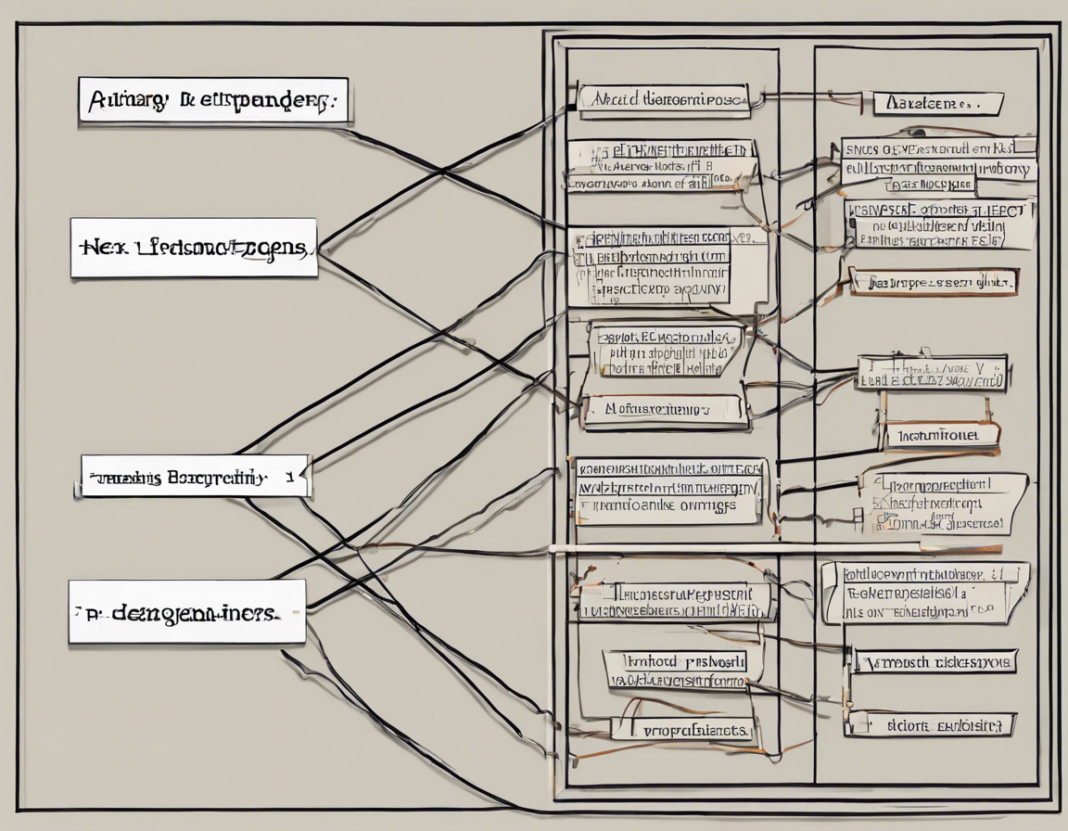In the world of databases, functional dependency relationships play a crucial role in determining the integrity of data. Understanding these relationships is fundamental to successful database design, normalization, and data management. In this comprehensive guide, we will delve deep into what functional dependency relationships are, how they work, why they are essential, and how to identify and utilize them effectively in database systems.
What Are Functional Dependency Relationships?
In the realm of databases, a functional dependency is a relationship between two attributes within a relation or table. More specifically, it describes the dependency of one attribute on another within the same table. In simple terms, if the value of one attribute uniquely determines the value of another attribute, then a functional dependency exists between them.
Types of Functional Dependency Relationships
-
Full Functional Dependency: This occurs when a particular attribute is functionally dependent on a set of attributes, and removing any attribute from that set would result in breaking the dependency.
-
Transitive Dependency: In this type of dependency, the value of one non-key attribute determines the value of another non-key attribute.
-
Partial Dependency: This happens when an attribute is dependent on only a part of the primary key, rather than the whole primary key.
Why Are Functional Dependency Relationships Important?
-
Data Integrity: Functional dependencies help maintain the integrity of the data by ensuring that each attribute in a table depends only on the primary key.
-
Normalization: Understanding and identifying functional dependencies is crucial for database normalization. By breaking down tables into smaller, more manageable structures, normalization reduces redundancy and anomalies in the data.
-
Query Optimization: By recognizing functional dependencies, the query optimizer can generate more efficient execution plans, leading to better performance of SQL queries.
Identifying Functional Dependency Relationships
To identify functional dependencies within a database table, you can follow these steps:
-
Understand the Data: Analyze the data and identify the relationships between different attributes.
-
Look for Patterns: Check for patterns where the value of one attribute uniquely determines the value of another.
-
Consider Keys: Determine the primary key of the table and analyze how other attributes depend on it.
-
Use Functional Dependency Diagrams: Visual representation can help you understand and document the dependencies effectively.
Utilizing Functional Dependency Relationships
Once you have identified functional dependencies, you can leverage them in various ways to enhance your database design:
-
Table Normalization: Use functional dependencies to normalize tables and eliminate redundancy.
-
Indexing: Create indexes on attributes that are frequently used in functional dependencies to improve query performance.
-
Data Consistency: By enforcing functional dependencies, you can maintain data consistency and prevent anomalies.
Challenges in Functional Dependency Relationships
While functional dependencies offer numerous benefits, they also come with certain challenges:
-
Complexity: In large databases, identifying and managing functional dependencies can be complex and time-consuming.
-
Maintenance: As databases evolve, maintaining functional dependencies becomes challenging, especially when modifying existing structures.
-
Performance Impact: Incorrectly defined dependencies or excessive normalization can impact query performance negatively.
Best Practices for Managing Functional Dependency Relationships
To effectively manage functional dependency relationships in databases, consider the following best practices:
-
Regular Review: Periodically review and update functional dependencies as the database evolves.
-
Documentation: Document all identified dependencies to ensure clarity and facilitate future changes.
-
Testing: Test the impact of changes to functional dependencies on query performance and data integrity.
-
Collaboration: Involve database administrators, developers, and stakeholders in discussing and validating functional dependencies.
Conclusion
Functional dependency relationships are at the core of database design and normalization. By understanding, identifying, and utilizing these relationships effectively, you can ensure data integrity, optimize query performance, and maintain a robust database system. While managing functional dependencies comes with challenges, following best practices and staying proactive can help you navigate these complexities and harness the full potential of your database infrastructure.
FAQs About Functional Dependency Relationships
1. What is the difference between functional dependency and referential integrity?
Functional dependency describes the relationship between attributes within a table, where one attribute determines the value of another. Referential integrity, on the other hand, is a constraint that ensures the consistency between related tables by enforcing valid foreign key relationships.
2. How do you represent functional dependency in a database schema?
Functional dependency can be represented in a database schema by specifying the primary key and the dependent attributes in a table, indicating how the values of dependent attributes are determined by the primary key.
3. Can a single attribute be functionally dependent on multiple attributes?
Yes, a single attribute can be functionally dependent on multiple attributes, leading to a composite functional dependency where the value of the dependent attribute is determined by a combination of values in other attributes.
4. How does normalization help in managing functional dependencies?
Normalization breaks down tables into smaller, well-structured entities to eliminate redundancy and anomalies. By organizing data logically, normalization ensures that functional dependencies are properly managed and data integrity is maintained.
5. Are functional dependencies only relevant in relational databases?
Functional dependencies are primarily associated with relational databases due to their emphasis on structure and normalization. While other types of databases may not utilize traditional functional dependency concepts, similar principles of data integrity and relationships still apply.
6. What is a superkey in the context of functional dependency relationships?
A superkey is a set of attributes within a table that uniquely identifies a tuple. A superkey can contain more attributes than the minimal set required for uniqueness, which may lead to redundancy. Identifying and eliminating superfluous attributes from a superkey is essential for normalization and managing functional dependencies.
7. How does denormalization impact functional dependency relationships?
Denormalization involves combining tables or adding redundancy to improve query performance. While denormalization can enhance performance, it may also complicate functional dependency relationships by reintroducing anomalies and dependencies that need to be carefully managed.
8. Can functional dependencies exist between attributes of different tables?
Functional dependencies typically apply within the same table, representing relationships between attributes of that table. However, in a broader database context, dependencies between attributes of different tables can be established through foreign key relationships, ensuring data consistency and integrity across related entities.
9. What role do constraints play in enforcing functional dependencies?
Constraints, such as primary key constraints and unique constraints, play a vital role in enforcing functional dependencies by defining rules and relationships within the database schema. By setting up constraints properly, you can ensure that functional dependencies are upheld, and data integrity is maintained.
10. How can data modeling tools assist in managing functional dependency relationships?
Data modeling tools provide visual representations of database structures, including tables, attributes, and relationships. These tools often include features to define and visualize functional dependencies, helping database designers and administrators analyze, document, and manage dependencies effectively.

